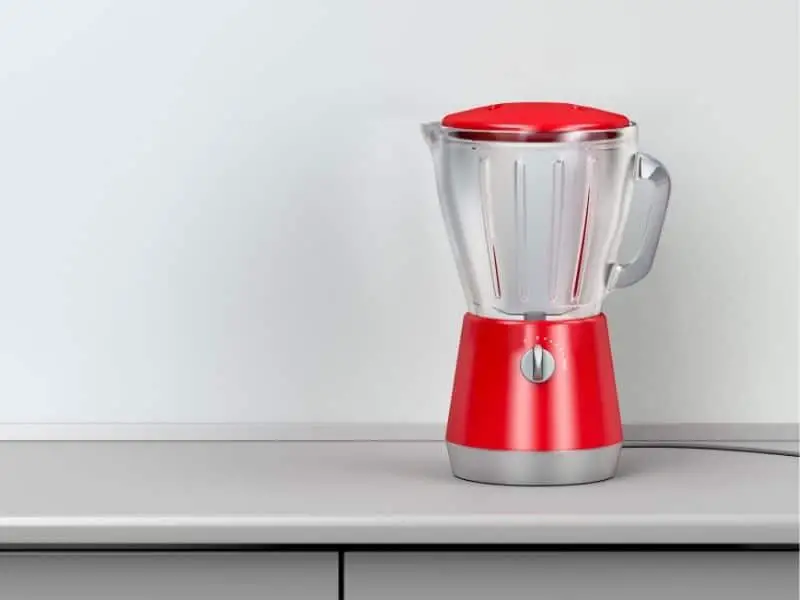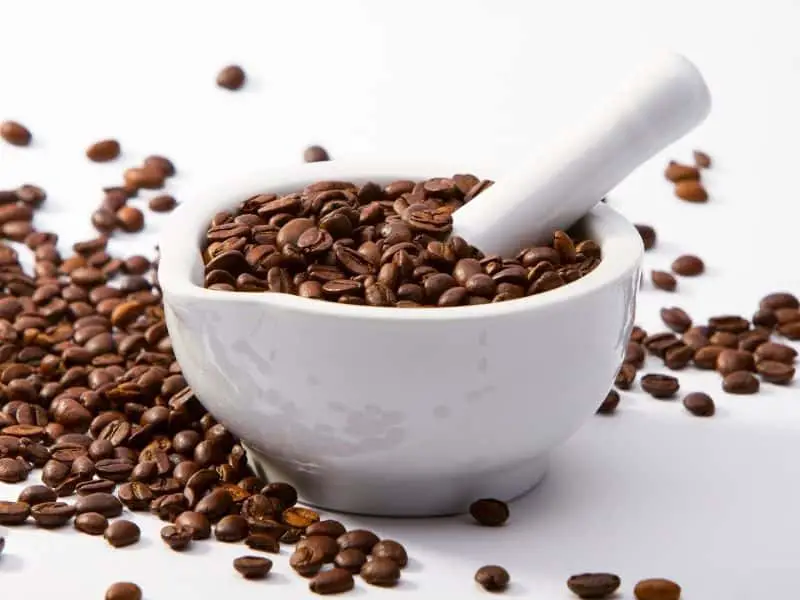If you’ve ever found yourself craving for a coffee, but all you have at hand are some fresh coffee beans and a blender, the question must have popped into your mind before: Can you grind coffee beans in a blender?
This is what we’re going to cover in this article, and here’s the short answer:
Yes, you can grind beans in a blender, but since most blenders have large chopping blades it is not always possible to control the type of grind. Grinding in a blender will usually result in a coarse grind, suitable for drip or French Press coffee, but probably not for espresso.

Now before we continue, the first question we should be asking before we get to grinding is why we grind coffee beans in the first place.
There is a simple answer to this and a very complex one. The simple answer is that it allows coffee to brew quickly, within minutes.
The complex answer is that the coffee bean when whole provides a protective shell around the various chemical compounds that give the coffee its flavor and aroma, and these are released when the bean is ground.
There is a lot more to that, but if you are not an expert in physical chemistry you don’t need to know.
Can you brew coffee beans without grinding them?
As mentioned above, we grind beans because it makes the brewing process faster. However, if it’s really not possible to grind the beans, or you wish to experiment, you can brew coffee from whole beans – it just takes a lot longer.
What you must not do, is try to boil the beans. This ends in over-extraction, resulting in a very bitter brew. But the bean can be boiled indirectly. No, I am not playing with words, and here is how:
- Get something like a Mason jar, the sort you use for preserving fruit, etc.
- Fill about a third with beans
- Add boiling water to the jar, to just under the lip
- Put the jar inside a cooking pot
- Fill the pot with water, to just under the top of the jar
- Boil on a stove for about one hour
- Take the jar out of the pot, carefully pour the brewed coffee into a cup, leaving the beans in the jar
- And you know what? That could be the best cup of coffee you ever tasted.
Is it always better to grind fresh?
The whole bean provides a protective shell around the flavor-packed inside. Roasted coffee beans, vacuum packed, will last up to six months before losing their flavor. Once opened they will last a week or two, even if you put them in an airtight container – opened is opened.
The bad news is that once ground, they start to lose the precious flavor and aroma almost immediately – the protective shell is gone, and they start to decay like a cut apple going brown.
So the fact is if you want a good-tasting cup, you grind and you brew, all at the same time.
How to grind coffee beans by hand
Strangely enough, in this advanced age, grinding by hand produces better results than with electric grinders.
A grinder operates at high speed, whizzing through the beans and all this friction causes an increase in the temperature of the beans, which causes flavor loss
A decent hand grinder, although slower, can produce a good cool grind. Taking anything up to a few minutes as opposed to seconds with an electric grinder, can even be therapeutic.
Slowly turn the handle, while the fragrant aroma is released to assail your senses. Almost zen.
There are other ways to hand-grind without anything mechanical.
Using a pestle and mortar, for example, or reverting to caveman tactics: put the beans in a clean, folded kitchen cloth and smash them with a rolling pin. Or with a hammer, if you really want to show those beans how tough you are.

Does a finer grind make stronger coffee?
Fine-ground coffee will always taste stronger.
This is because the finer it is ground, the longer it takes for water to pass through it, extracting the flavor compounds from the coffee.
Espresso coffee tastes stronger than drip coffee, not because it is usually served in a smaller cup, but because the water passing through a fine espresso grind will have a larger surface area to cover due to a higher number of particles and spend longer doing that than with a coarser grind in a drip machine or French press.
In truth though, it may taste stronger but in reality, the “strength” in terms of caffeine level is about the same.
There is only so much caffeine in each bean.
Is it worth it to grind your own coffee?
The answer to this question has to be a definite yes if you are making a cup of java at home.
The best possible scenario is to have beans that have been freshly roasted, within one or two weeks. Fresh ground, using your preferred method. And brewed immediately.
In any other situation than this, it all starts to go downhill from there, the longer the time between steps.
Of course, you can do it all wrong and still have a good, drinkable cup, but it won’t be a great cup – so why settle for less?
Final thoughts on grinding coffee beans
As you can see, you can grind coffee beans in a blender, but it won’t result in the finest of grounds. If it’s all you have though, it will probably get the job done.
Otherwise, try an electrical grinder, or resort to more manual methods with a mechanical approach. Be that with a manual grinder, or going old-school with a pestle and mortar.
Whichever method you choose, grinding your beans fresh will definitely be worthwhile, resulting in a richer coffee without losing the flavor over time.
